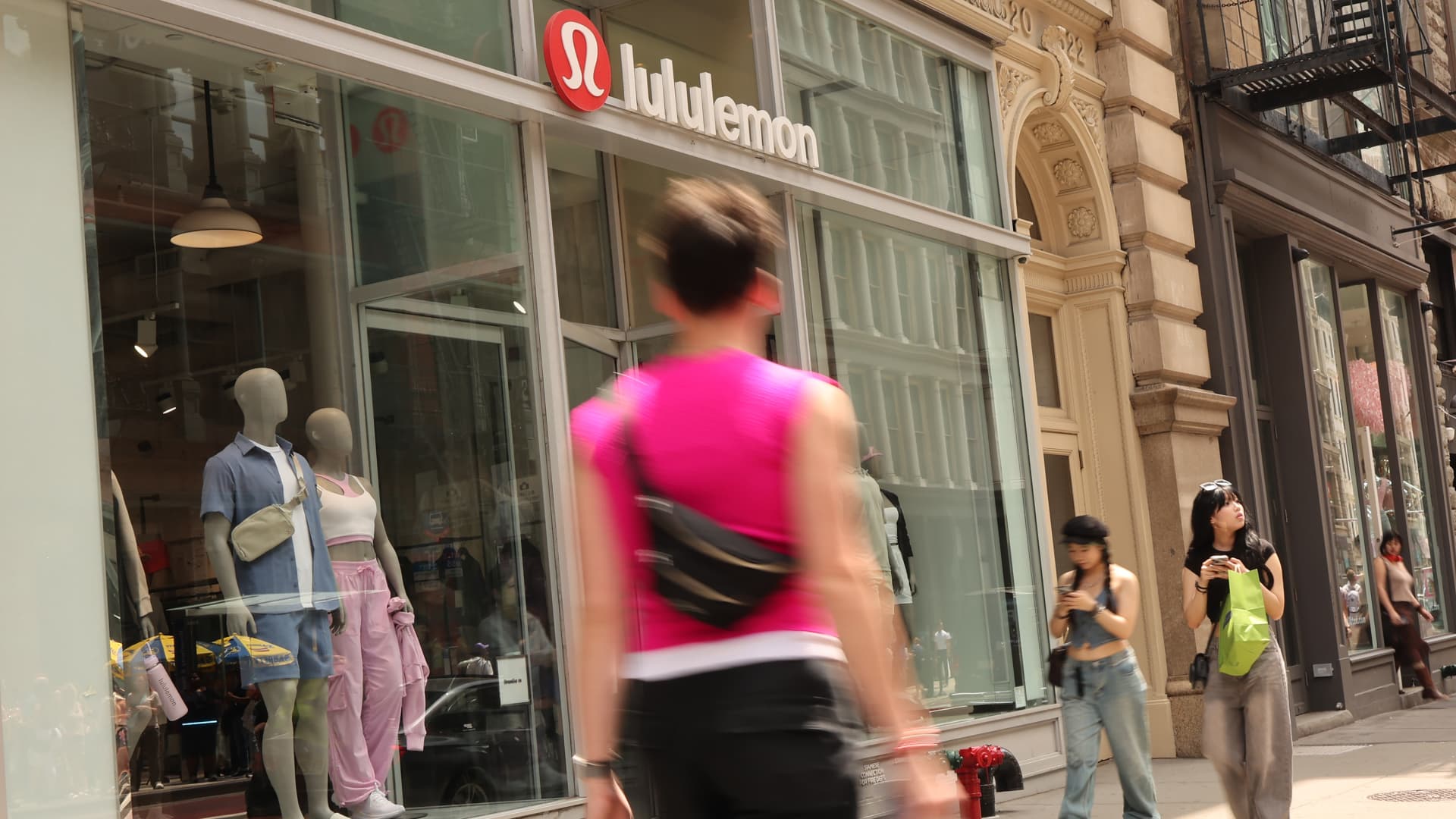Lululemon’s Recent Market Setbacks: A Critical Analysis
The recent plunge in Lululemon Athletica’s stock price, ranging from 13% to over 20% across recent trading sessions, signals investor unease with the company’s current challenges, primarily weak demand forecasts and economic uncertainties. Despite beating certain quarterly earnings expectations, Lululemon faces a dynamic macroenvironment marred by tariff uncertainties, inflationary pressures, and shifting consumer spending behavior. This report explores the root causes, company responses, financial implications, and the broader competitive landscape impacting Lululemon’s outlook and valuation.
Market Reaction and Stock Performance
The collective market response to Lululemon’s latest earnings and guidance announcements has been overwhelmingly negative. Shares have tumbled dramatically, with after-hours trading witnessing declines as steep as 21%. Even with strong quarterly earnings — notably a 10% revenue increase to $10.6 billion for fiscal 2024 and earnings per share (EPS) beats in Q1 2025 — market sentiment soured on the downbeat full-year profit outlook. The discrepancy between reported quarterly results and forward guidance indicates investor skepticism about sustaining growth amid prevailing headwinds.
Underlying Factors Behind Weak Guidance
1. Tariff and Geopolitical Uncertainty
Lululemon cited tariff uncertainties as a key pressure point affecting cost structures and pricing strategies. These external trade policy risks introduce volatility in supply chain expenses and could hinder margin expansion, complicating accurate forecasting and operational planning.
2. Sluggish Consumer Demand and Spending Behavior
Multiple reports and CEO statements highlight inflation and broader economic concerns as dampening consumer spending momentum, especially in Lululemon’s largest market, the Americas. Soft comparable store sales in Q1 2025 reflect reduced foot traffic and reticence to increase discretionary apparel spending. Analysts and market data from sources like Placer.ai confirm a notable decline in sportswear-related retail visits, signaling a tangible demand slowdown.
3. Competitive and Product Challenges
Lululemon’s growth hurdles also stem from challenges in product rollouts, where certain launches underperformed against expectations. Weak brand awareness in some segments or regions may exacerbate these issues, particularly amid increasing leisurewear competition. Execution missteps in product strategy can dilute customer loyalty and reduce repeat purchasing frequency.
Financial Implications and Revised Forecasts
While full-year fiscal 2024 revenue rose by 10% to $10.6 billion, Lululemon tempered its outlook for fiscal 2025, now projecting revenue between $11.15 billion and $11.3 billion — effectively flat versus prior estimates at the high end of this range. The revision extends to earnings per share, with analysts noting downwards adjustments around $0.32 per share compared to earlier forecasts.
The company’s Q2 2025 revenue guidance falls between $2.54 billion and $2.56 billion, which is below some street expectations. This outlook and cautious stance are reflective of ongoing macroeconomic uncertainties and operational complexities. Despite these, Lululemon holds a strong financial position, with management signaling intent to “play offense” by leveraging competitive advantages and robust liquidity to navigate the environment proactively.
Strategic Response and Growth Initiatives
In response to these headwinds, Lululemon has articulated a five-year growth plan aiming to double revenue by 2026 to $12.5 billion. This ambitious target underscores the company’s confidence in its brand and long-term market positioning despite short-term volatility. Key elements likely include geographic expansion (notably further growth in China, which some analysts see as a catalyst for re-rating), product innovation, and investment in digital retail channels including their e-commerce and re-commerce like the “Like New” program.
However, success hinges on the company’s ability to mitigate tariff and cost risks, reignite consumer enthusiasm, and refine product launches to restore momentum.
Broader Apparel Industry Context
Lululemon is not isolated in facing a challenging retail landscape. Many apparel retailers have reduced or withdrawn forecasts amid similar pressures of inflation, economic uncertainty, and volatile consumer preferences. Price hikes to offset costs may further suppress demand, creating a cycle of cautious consumerism affecting the sector broadly.
Corporate layoffs in retail and other cost-optimization efforts signal widespread caution, prompting investors to weigh near-term risks against long-term brand strength and innovation pipelines.
—
Conclusion: Navigating Headwinds Toward a Resilient Future
Lululemon’s recent earnings reports and downgraded guidance have rattled the market, reflecting the complex interplay of external economic headwinds, internal operational challenges, and evolving consumer patterns. While short-term forecasts appear cautious with lowered profit expectations and revenue outlook adjustments, the company’s solid fundamentals, strategic growth ambition, and strong brand identity provide a foundation for recovery.
Investors and stakeholders must watch closely how Lululemon navigates tariff uncertainties, counters demand softening with product and market innovation, and leverages its financial strength to “play offense.” The company’s trajectory depends on its agility in a dynamic macroenvironment and ability to translate strategic plans into tangible growth, potentially unlocking new valuation opportunities in the coming years.
Lululemon’s journey illustrates the delicate balance successful retailers must maintain amid an unpredictable global economy—a test of resilience and strategic foresight in an era where consumer confidence and market stability remain fluid.





